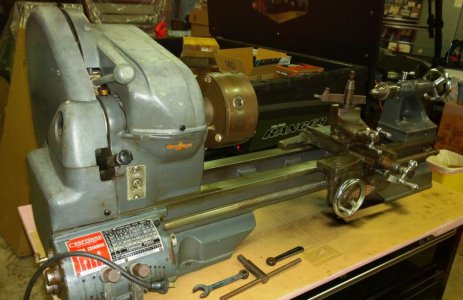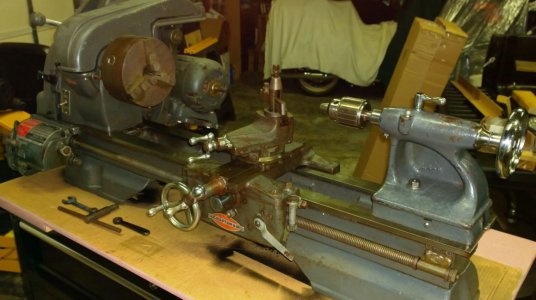OK. I'm not sure why but I had assumed that it was an earlier model. The QCGB equipped 101.27430 (and 101.27440) first appeared in the 1951 Craftsman Power Tools Catalog. Given typical catalog lead times, that means that the first ones were probably built 3rd Quarter 1950. From the serial number of this one, until we get the bearing dates I'll estimate its date at 1951/12/xx.
The motor could have been bought at the same time as the lathe. But I would imagine that the salesman, if asked, would probably have recommended a 1/2 HP capacitor start motor.
The only non-original part that I see is the right lead screw bearing. It is the earlier one from the late 1930's, and it has been repaired. The design of the bearing was that in the event of a crash while under power feed, the bearing would break and the lead screw would be ejected from the QCGB, hopefully reducing the damage. However, the way in which it was repaired makes it more likely that something else would break before the bearing did.
One comment that I'll make is that the half-nut lever visible in the second photo is in the engaged position. Get in the habit of never leaving it engaged. It won't damage anything per se to start the lathe with it engaged. But as soon as the motor starts turning, the carriage will begin to move. If the cutter was near a shoulder at the time, depending upon the setting of the QCGB you could have a crash almost immediately. Always remember that there are only about two valid excuses for a crash, sudden death of the operator or a nearby thermonuclear explosion.



